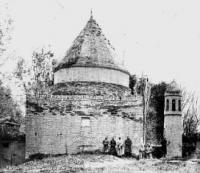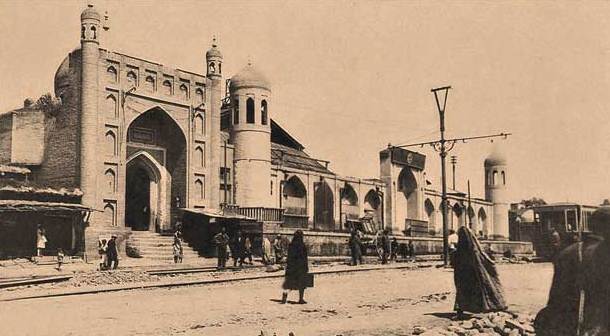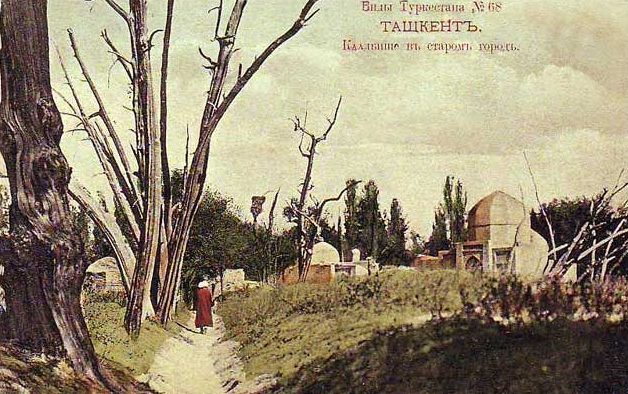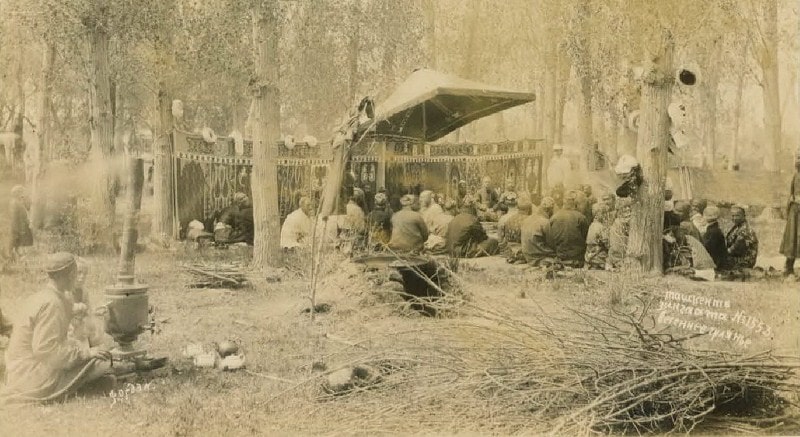You are here
The history of the ensemble of Sheikhantaur.

Tours from Turkestan to Tashkent.
“Khoja Nasreddin had a very good cow that gave a lot of milk. Once she fell ill and died. Khoja was distraught with grief.
Neighbors began to say that when Khoja died his beloved wife a month ago, he didn’t grieve and kill so much.
“Of course,” Khoja replied, “When my wife died, everyone comforted me and said:“ Do not cry, we will find you a new wife even better ... ”But now two days have passed since my cow died and no one comes he doesn’t comfort me: “Do not cry, we will buy you a new cow even better ...” So what can I do now?”
100 stories about Khoja Nasreddin.
Excursions and tours to the Sheikhantura ensemble.
The ensemble of Sheikhantaur is an architectural complex, the center of which is the Mausoleum of Sheikh Hovendi at-Tahura (Sheihantaura). According to written sources, in the 5th-8th centuries, local people professed Zoroastrianism on the territory of Chach.
On the territory occupied by the Sheihantaur architectural complex there were several houses (pools with water), since water was also one of the images of Zoroastrian worship. Also among the local pre-Islamic population there was a cult of tree-long-worshiping worship.
Apparently, Saur alley was the alley of religious trees. According to legends, Sheikh at-Tahur, having traveled to the city of Turkestan, where he learned the mystical philosophy of Ahmad Yassavi, learning patience and meekness, after many years of wandering, he returned to Tashkent and settled at the holy source, about which a beautiful legend had been built over time immemorial.
According to this legend, the water of “eternal life” beat from this source, and on its shore, in the shade of the trees, Iskander the Two-Horned himself (Iskander Zulkarnay) rested, that is, Alexander the Great. According to legend, in pre-Islamic times, this key had a pagan temple of Water and Fire.
It was here that Sheikh al-Tahur (Khavendi Takhur from Bogustan), who died in 1355, bequeathed himself. At his grave for a long time the so-called sauri of Iskander grew - millennial trees that had lost their foliage and almost petrified with age.
The trunk of one of these trees has survived to the present day inside the Sheikhantaur mausoleum, right next to its grave. Chronology of the construction of architectural monuments and structures on the territory of the complex.
The mausoleum of Sheikh Xavendi Tahur from Bogustan (Sheikhantaur), who died in 1355, was first built. At the end of the fifteenth century, Chilliakhona, Kyldyrgach Biya mausoleum, Yunus Khan Mogulistan mausoleum were built.
In 1892, the chortak and the madrasa of Ishan Kuli-datkh, depicted in the photograph, were built.
In 1908 - 1910 Khojimat-Ishan from Namangan built an Aurat mosque with a minaret.
In 1913, a minaret was built near the mausoleum of Yunus Khan.
In addition, the complex was still Kuktellik-ata mausoleum and the Kaba mausoleum. There were also several quarterly frame mosques: the Zanjirlik mosque at the entrance to the complex, and the Garib and Said Azimbay mosques on the sides of the Yunus Khan mausoleum.
In 1932, the Khatun Mosque, built in 1754, was moved to the complex from the “old city”. In the 1980s, another mosque was moved to the complex from the “old city”.




Authority:
https://meros.uz







